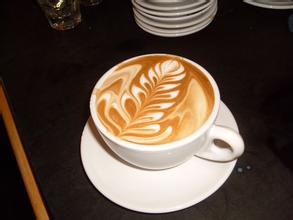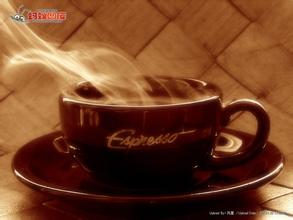Introduction to the flavor and taste characteristics of coffee growing environment in Santa Rita Manor, Colombia
After the Liberal Party returned to power, it implemented some reforms under the pressure of the people. a. During Lopez Pumareho's first reign, the Constitution was amended in 1936: defining the principle of separation of powers and implementing direct elections; abolishing the Catholic Church's monopoly on education; stipulating that workers have the right to strike and freedom to choose their careers; the government recognizes the ownership of farmers' occupation of private wasteland and stipulates the maximum working days and unemployment benefits for workers. During the second World War, due to the decrease in imports of industrial products and the increase in coffee exports, Colombia's industry and agriculture developed, the country's gold reserves increased, and the working class grew. After the outbreak of the Pacific War in December 1941, Colombia severed diplomatic relations with Japan and declared war on Germany in November 1943.
In 1946, the Conservative M. Ospina Peres, who was elected president with the support of the United States (1946-1950), persecuted liberals and working people. In April 1948, J.E., the left-wing leader of the Liberal Party. Gaetan was assassinated, leading to an armed uprising. In 1949, the Conservative L.E. Gomez Castro was elected president and carried out a pro-American dictatorship. In 1950, farmers organized guerrillas in the mountainous areas to repel the siege of government forces many times. In 1953, commander of the armed forces G. Rojas Pinilla came to power in a coup and was forced to step down in 1957. In the same year, the Liberal Party and the Conservative Party reached an agreement to form a national front and decided to take turns as president and form a cabinet for 16 years from 1958. Since then, the national economy has developed rapidly. But the massive import of US capital controls Colombian oil, coffee and banana production and manipulates Colombia's foreign trade. After the expiration of the two-party agreement in 1974, the Liberal Party was elected president for two consecutive terms, and the political situation was relatively stable. In October 1974, the government announced the cancellation of oil concessions to foreign companies. In 1975, a decree was issued to provide for the "Colombialization" of foreign banks, credit institutions, etc. On February 7, 1980, Colombia formally established diplomatic relations with China. In 1982, the Conservative B. Betankur Qualtas was elected president, declared his government a super-party national government, and approved a bill to pardon the guerrillas in order to resolve the issue of domestic peace through dialogue with rebel forces. The Government reached a peaceful ceasefire agreement with major guerrilla organizations in 1984 and the national dialogue began in January 1985; however, guerrilla activities continued. In 1986, V. B. of the Liberal Party. Vargas was elected president.
modern
After taking office in 2002, Colombian President Uribe took a tougher right-wing line. FARC was vigorously besieged and suppressed by the government. The Revolutionary Armed Forces of Colombia killed Uribe's father in 1983. After Uribe came to power, the top priority was to fight against the Revolutionary Armed Forces of Colombia, which brought Colombia closer to the United States, and the United States gave more money to Colombia. Since 2000, in the face of the intensified crackdown by the government, the Revolutionary Armed Forces of Colombia (FARC) began to withdraw gradually. The tide of the left has risen one after another in South America in recent years, and Colombia is one of the few countries where the right is still in power.
The first part is the triangle of the background, which symbolizes the Andes and implies that most of the Arabica coffee growing areas in Colombian coffee belong to high-altitude mountains. It is well known that the main coffee producing areas in Colombia are located in three mountains arranged with the word "Sichuan", all of which are part of the Andes. According to the geographical environment and climate, the characteristics and flavor of coffee in different regions are the same.
The second part is the mule. Please note that it is not a donkey! In Colombia coffee farmers actually use mules to carry coffee from the mountains. Because the mountain road in the coffee growing area of Colombia is very rugged, coffee farmers mostly use mules as a means of transportation. because of such unique geographical conditions, even with the development of transportation and science and technology today, it is impossible to transport coffee and raw beans from more than 1000 meters above sea level. and rugged mountain roads to transport coffee beans, so the way of carrying mules continues to this day.
The third part is the man in the straw hat, who has a name. His name is Juan Valdez. People used to call him "Uncle JUAN VALDEZ". Juan Valdez is the representative image of Colombian coffee growers and a symbol of Colombian coffee, which distinguishes it from coffee from other countries of origin and is accepted by different markets. In the last 40 years, Colombian coffee growers have made great efforts to create the "JUAN VALDEZ" brand we see today. In 2005, the New York Times confirmed the importance of this brand in the United States, because its trademark recognition has exceeded many of the world's leading brands and gradually become a world-famous brand.
In order to better promote Colombian coffee, the Colombian Coffee Growers Association (FNC) launched a live-action version of Juan Valdez based on this image.
Now the uncle is the third-generation real-life version. Uncle Juan Valdez, who represents Colombian coffee farmers, as the ambassador of Colombian coffee, will travel around the world to promote Colombian coffee. A beard, a straw hat and the mules around him are his necessary wardrobe. Uncle Dou was still happy to see him at the 2010 Shanghai World Expo.

Important Notice :
前街咖啡 FrontStreet Coffee has moved to new addredd:
FrontStreet Coffee Address: 315,Donghua East Road,GuangZhou
Tel:020 38364473
- Prev

Introduction to the flavor and taste of coffee growing environment in Ireta Manor, Panama
Panamanian land use: arable land accounts for 8.9%, permanent pastures account for 20.0%, forests and woodland account for 43.0%, others account for 28.1%; per capita arable land accounts for 0.6 acres. [2] Mineral resources Panama is rich in mineral resources, but it is not exploited much, and the scale of the mine is relatively large.
- Next

Characteristics of Flavor planting Environment in Costa Rican Coffee Manor
The Supreme Court is the highest judicial body, composed of 22 judges for a term of eight years. At the end of his term of office, he or she may be automatically re-elected if there is no objection from the members of Parliament. There are four courts, the first, second and third tribunals are each composed of five judges, and the fourth court (Constitutional Court) is composed of seven judges and has the final power to interpret the Constitution. The Chief Justice shall be appointed by the Legislative Assembly for a term of eight years and may be re-elected. Highest
Related
- Does Rose Summer choose Blue, Green or Red? Detailed explanation of Rose Summer Coffee plots and Classification in Panamanian Jade Manor
- What is the difference between the origin, producing area, processing plant, cooperative and manor of coffee beans?
- How fine does the espresso powder fit? how to grind the espresso?
- Sca coffee roasting degree color card coffee roasting degree 8 roasting color values what do you mean?
- The practice of lattes: how to make lattes at home
- Introduction to Indonesian Fine Coffee beans-- Java Coffee producing area of Indonesian Arabica Coffee
- How much will the flavor of light and medium roasted rose summer be expressed? What baking level is rose summer suitable for?
- Introduction to the characteristics of washing, sun-drying or wet-planing coffee commonly used in Mantenin, Indonesia
- Price characteristics of Arabica Coffee Bean Starbucks introduction to Manning Coffee Bean Taste producing area Variety Manor
- What is the authentic Yega flavor? What are the flavor characteristics of the really excellent Yejasuffi coffee beans?

